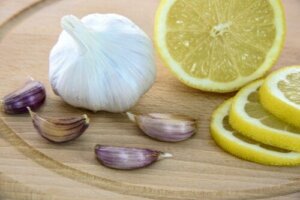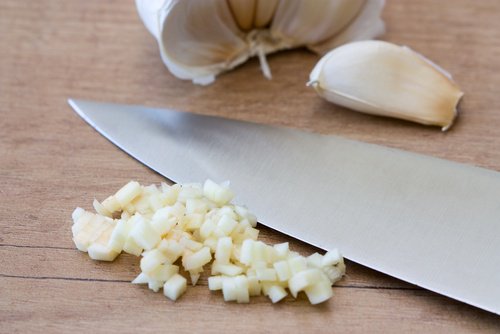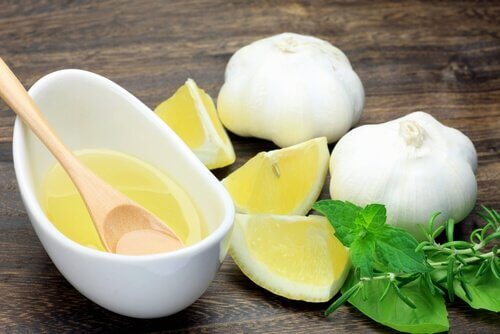Can a Garlic-Lemon Treatment Help Remove Warts?


Reviewed and approved by the pharmacist Lourdes Martínez
In order to remove warts, the best thing to do is visit a dermatologist and evaluate the treatment options they propose.
It should be noted that, depending on the case, the treatment options will differ. Therefore, it’s important for a professional to carefully examine the affected area.
For example, the application of salicylic acid is best for common warts but filiform ones require a scalpel or liquid nitrogen.
Warts caused by HPV
Before we tell you more about the home wart remedy, we’ll look at some of the facts to consider when considering the best treatment option.
Warts are caused by human papillomavirus (HPV) infection of which there are about 200 subtypes, according to a brochure by Asociación Española de Patología Cervical y Colposcopia.
HPV suddenly accelerates the growth of cells. Over time, it causes painless (and benign) growths that spread easily. Although its presence doesn’t represent a serious health problem, it’s a sign of a weakened immune system.
Furthermore, they’re usually an aesthetic problem and, according to statistics, between 10 and 15 percent of the infected population may develop premalignant lesions, especially in the genitals or larynx.
Garlic, a common ingredient and … antibiotic?

Although antibiotic and antimicrobial properties were attributed to it, given its allicin content, research has shown that in order to take advantage of these properties, certain laboratory conditions must be met.
For this reason, placing garlic on a wart to remove it won’t lead to the desired effect. In turn, it may cause itching and even a rash, depending on our skin type.
Lemon, a high source of vitamin C and … antibiotic?
According to popular belief, the citric acid in lemon juice means this fruit is a natural antibiotic. Similarly, people believe its nutrients (including vitamin C) can help regulate the pH of the skin and correct skin disorders such as warts.
Although this fruit is acidic and rich in vitamin C, this doesn’t mean its topical application is antimicrobial or makes specific contributions to skin health.
We do know that its consumption within a balanced diet provides nutrients to the body but, ultimately, its topical use doesn’t heal the skin and doesn’t remove warts.
Discover Lemon, Olive Oil, and Apple Cider Vinegar: An Ideal Remedy for Kidney Stones
A garlic-lemon treatment to remove warts

Ingredients
- 1 garlic clove
- A band-aid
- The juice of 1/2 a lemon
Preparation and application
- Firstly, crush the garlic clove to a thick paste
- Then, mix it with the lemon juice
- After that, wait a couple minutes for the ingredients to chemically react
- Apply the solution directly on the wart
- Cover the affected area with a band-aid and let it do its thing overnight
- The next day, rinse your skin with plenty of water and dry it well
- Repeat every night until the wart is gone
Important recommendations to remove warts
Never try to forcibly remove the wart with your hands or any instrument. This can cause injury and infection far worse than the aesthetic problems of a simple wart of verruca.
According to the MSD Manual, there are no firm indications to remove warts, so treatment varies from case to case. The manual also states that salicylic acid is the most commonly used topical agent.
All cited sources were thoroughly reviewed by our team to ensure their quality, reliability, currency, and validity. The bibliography of this article was considered reliable and of academic or scientific accuracy.
- Abeck, D., & Fölster-Holst, R. (2015). “Quadrivalent human papillomavirus vaccination: A promising treatment for recalcitrant cutaneous warts in children”, Acta Derm Venereol, 95 (8): 1017-1019.
- Bonnez, W. (2015) “Papillomaviruses”. In: J.E. Bennett, R. Dolin, M.J. Blaser (eds.), Mandell, Douglas, and Bennett’s Principles and Practice of Infectious Diseases. Philadelphia, PA: Elsevier. Chap. 146.
- EL, I. P. (2009). VIRUS DEL PAPILOMA HUMANO. Disponible en: https://www.aepcc.org/wp-content/uploads/2019/06/Folleto_divulgativo_Infeccion1.pdf
- Habif, T.P. (2016). “Warts, herpes simplex, and other viral infections”. In: Habif, T.P. (ed.), Clinical Dermatology: A Color Guide to Diagnosis and Therapy. Philadelphia, PA: Elsevier. Chap. 12.
This text is provided for informational purposes only and does not replace consultation with a professional. If in doubt, consult your specialist.








